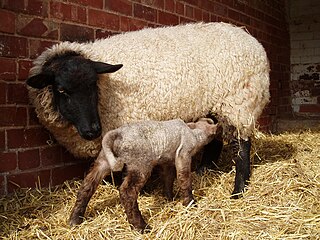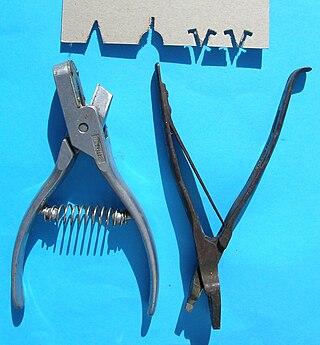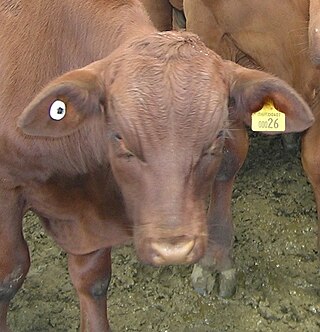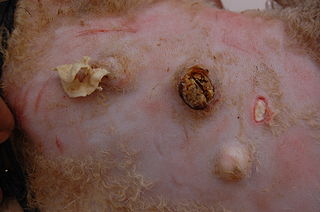Radio-frequency identification (RFID) uses electromagnetic fields to automatically identify and track tags attached to objects. An RFID system consists of a tiny radio transponder called a tag, a radio receiver, and a transmitter. When triggered by an electromagnetic interrogation pulse from a nearby RFID reader device, the tag transmits digital data, usually an identifying inventory number, back to the reader. This number can be used to track inventory goods.

The Electronic Product Code (EPC) is designed as a universal identifier that provides a unique identity for every physical object anywhere in the world, for all time. The EPC structure is defined in the EPCglobal Tag Data Standard, which is a freely available standard. The canonical representation of an EPC is a URI, namely the 'pure-identity URI' representation that is intended for use when referring to a specific physical object in communications about EPCs among information systems and business application software.

Livestock branding is a technique for marking livestock so as to identify the owner. Originally, livestock branding only referred to hot branding large stock with a branding iron, though the term now includes alternative techniques. Other forms of livestock identification include freeze branding, inner lip or ear tattoos, earmarking, ear tagging, and radio-frequency identification (RFID), which is tagging with a microchip implant. The semi-permanent paint markings used to identify sheep are called a paint or color brand. In the American West, branding evolved into a complex marking system still in use today.
Cud is a portion of food that returns from a ruminant's stomach to the mouth to be chewed for the second time. More precisely, it is a bolus of semi-degraded food regurgitated from the reticulorumen of a ruminant. Cud is produced during the physical digestive process of rumination.

A microchip implant is an identifying integrated circuit placed under the skin of an animal. The chip, about the size of a large grain of rice, uses passive radio-frequency identification (RFID) technology, and is also known as a PIT tag. Standard pet microchips are typically 11–13 mm long and 2 mm in diameter.
ISO 11784 and ISO 11785 are international standards that regulate the radio-frequency identification (RFID) of animals, which is usually accomplished by implanting, introducing or attaching a transponder containing a microchip to an animal.
The National Animal Identification System, (naisG) is a government-run program in the United States intended to extend government animal health surveillance by identifying and tracking specific animals. Administered at the federal level by the Animal and Plant Health Inspection Service, a branch of the United States Department of Agriculture, NAIS will also be overseen by state animal health boards. While the federal program is voluntary, money received by some states, tribes, and non-profit entities from the USDA through cooperative agreements has been used to make parts or all of the program mandatory.

Fenbendazole is a broad spectrum benzimidazole anthelmintic used against gastrointestinal parasites including: giardia, roundworms, hookworms, whipworms, the tapeworm genus Taenia, pinworms, aelurostrongylus, paragonimiasis, strongyles, and strongyloides that can be administered to sheep, cattle, horses, fish, dogs, cats, rabbits, most reptiles, freshwater shrimp tanks as planaria and hydra treatments, as well as seals.
Information and communication technology in agriculture, also known as e-agriculture, is a subset of agricultural technology focused on improved information and communication processes. More specifically, e-agriculture involves the conceptualization, design, development, evaluation and application of innovative ways to use information and communication technologies (ICTs) in the rural domain, with a primary focus on agriculture. ICT includes devices, networks, mobiles, services and applications; these range from innovative Internet-era technologies and sensors to other pre-existing aids such as fixed telephones, televisions, radios and satellites. Provisions of standards, norms, methodologies, and tools as well as development of individual and institutional capacities, and policy support are all key components of e-agriculture.

The raising of domestic sheep has occurred in nearly every inhabited part of the earth, and the variations in cultures and languages which have kept sheep has produced a vast lexicon of unique terminology used to describe sheep husbandry.

Domesticated sheep are herd animals that are bred for agricultural trade. A flock of sheep is mated by a single ram, which has either been chosen by a farmer or, in feral populations, has established dominance through physical contests with other rams. Sheep have a breeding season (tupping) in the autumn, though some can breed year-round.

Sheep or domestic sheep are a domesticated, ruminant mammal typically kept as livestock. Although the term sheep can apply to other species in the genus Ovis, in everyday usage it almost always refers to domesticated sheep. Like all ruminants, sheep are members of the order Artiodactyla, the even-toed ungulates. Numbering a little over one billion, domestic sheep are also the most numerous species of sheep. An adult female is referred to as a ewe, an intact male as a ram, occasionally a tup, a castrated male as a wether, and a young sheep as a lamb.

An earmark is a cut or mark in the ear of livestock animals such as cattle, deer, pigs, goats, camels or sheep, made to show ownership, year of birth or sex.
The British Cattle Movement Service (BCMS) is the organisation responsible for maintaining a database of all bovine animals in Great Britain; Northern Ireland has a separate database maintained by the Department of Agriculture, Environment and Rural Affairs. It was established in the wake of the mad cow disease crisis in the UK, and is part of the Rural Payments Agency. Member states of the European Union have similar cattle tracing systems.

The National Livestock Identification System (NLIS) is a livestock identification and tracking system used in Australia. It is administered by Integrity Systems Company, which is a wholly owned subsidiary of Meat and Livestock Australia.

The Hereford Hog or Hereford is an American breed of domestic pig. It is named for its color and pattern, which is similar to that of the Hereford breed of cattle: red with a white face.
Precision livestock farming (PLF) is a set of electronic tools and methods used for the management of livestock. PLF involves automated monitoring of animals to improve their production, reproduction, health, welfare, and impact on the environment. PLF tracks large animals, such as cows, "per animal", but smaller animals, such as poultry, "per flock", wherein the whole flock in a house is treated as one animal. Tracking "per flock" is widely used in broilers.

Caseous lymphadenitis (CLA) is an infectious disease caused by the bacterium Corynebacterium pseudotuberculosis, that affects the lymphatic system, resulting in abscesses in the lymph nodes and internal organs. It is found mostly in goats and sheep and at the moment it has no cure.

Animal identification using a means of marking is a process done to identify and track specific animals. It is done for a variety of reasons including verification of ownership, biosecurity control, and tracking for research or agricultural purposes.

An animal tattoo or pet tattoo is a tattoo that a person has placed on an animal, which may be for animal identification, aesthetics, or artistic purposes. Animal identification via tattoo is a practice within the agricultural industry, at breeding farms, in scientific laboratories, and in the identification of domesticated pets. Anaesthetic or other methods of sedation are commonly administered for this type of procedure, with the aim to provide minimal harm and pain to the animal. There is a diversity of opinion concerning the morality of animal tattooing, related to concerns about animal welfare.















